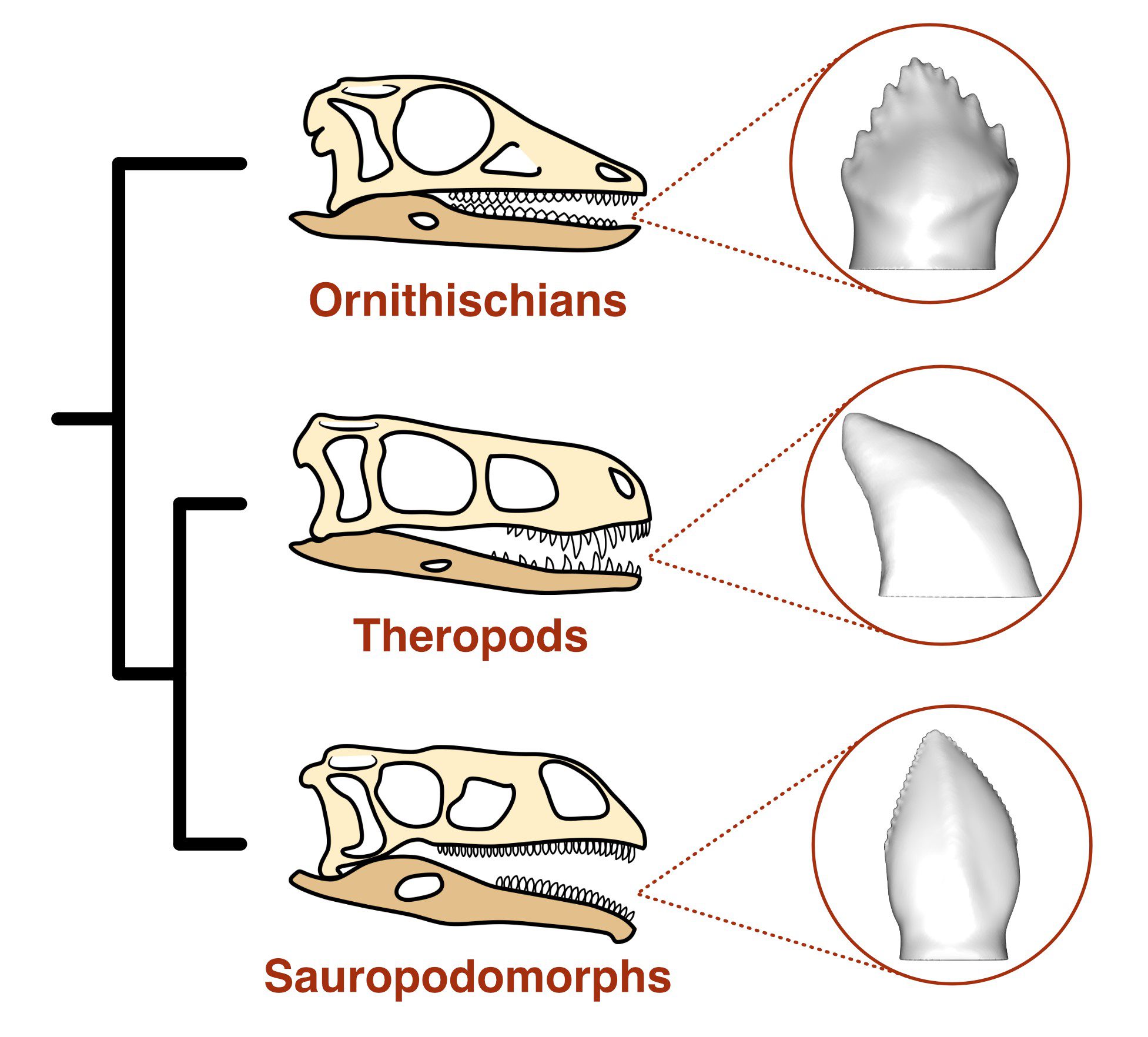The largest creatures to ever walk the Earth were the giant sauropods such as Brontosaurus, Patagotitan, and, of course, Diplodocus of the non-supersonic tails. All of them reached their enormous sizes on a diet of leaves and other vegetable matter. However, a study of the teeth of the earliest dinosaurs shows these (probably) gentle giants were descended from meat eaters. While specialization helped the sauropods achieve their longevity, flexibility was probably key to the early dinosaurs’ success.
An alien visitor to Earth 230 million years ago would probably not have seen the early dinosaurs as likely candidates to rule the Earth. They were small – not only compared to their descendants, but to the largest reptiles of the day. However, when the Triassic-Jurassic mass extinction occurred, they were the ones able to take advantage of others’ demise.
Dr Antonio Ballell of the University of Bristol and co-authors report on the few skulls and teeth we have from the Triassic dinosaurs, seeking the cause of their success.
We have very few pieces of direct evidence for dinosaur diets in the form of stomach contents or fossilized droppings that can be matched to a specific species, the paper acknowledges. However, living animals’ teeth are usually so well matched to their diets that it is reasonable to assume the same was true in the Triassic.
“The generalized carnivore tooth shape is sharp and pointed,” the paper notes; “Suited to puncture and cut ductile and deformable tissues such as vertebrate flesh, while the mean herbivorous tooth is blunt and cusped to propagate fractures in tougher materials such as plant tissues.” However, species adapted to feed on specialized forms of vegetation provide extra diversity for the shapes of plant-eater teeth.

The three main dinosaur lines and typical examples of their teeth, revealing their primary diets. Image Credti: Antonio Ballell
“Soon after their origin, dinosaurs start to show an interesting diversity of skull and tooth shapes. For decades, this has made palaeontologists suspect that different species were already experimenting with different kinds of diets. They have compared them to modern lizard species and tried to infer what they ate based on the similarities in their teeth,” Ballell said in a statement.
The team used computers to quantify the shape of the fossil teeth and compare them to living reptiles. Monitor lizards possess the teeth most closely resembling the pointy, curved, and serrated dentition of ancient theropods, in case you’d like to know what it feels like to be bitten by a small counterpart of a Tyrannosaur.
More surprisingly, the ornithischians and sauropodomorphs had teeth more similar to iguanas, which live on whichever plants are available where they live.
“Our analyses reveal that ornithischians – the group that includes many plant-eating species like the horned dinosaurs, the armoured ankylosaurs and the duck-billed dinosaurs – started off as omnivores,” said Bristol’s Professor Emily Rayfield. “And another interesting finding is that the earliest sauropodomorphs, ancestors of the veggie long-necked sauropods like Diplodocus, were carnivores.”
It has long been believed the first dinosaurs were meat-eaters, so the sauropods must have had carnivory in their bloodline if one went back far enough. What is new in this work is that the switch to herbivory did not coincide with the appearance of the ornithischian and sauropodomorph clades, instead developing quite a bit later.
“It seems that one of the things that made the first dinosaurs special is that they evolved different diets throughout the Triassic, and we think this might have been key for their evolutionary and ecological success,” Ballell said.
The paper is published open access in Science Advances.
Source Link: Giant Herbivorous Sauropods Like Diplodocus Were Descended From Meat-Eating Ancestors